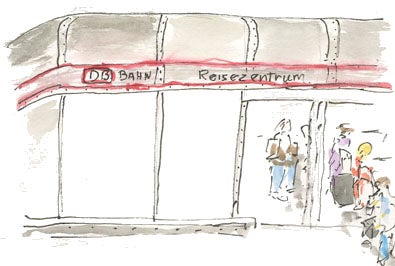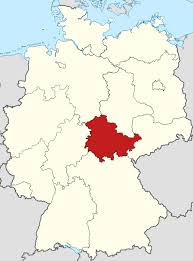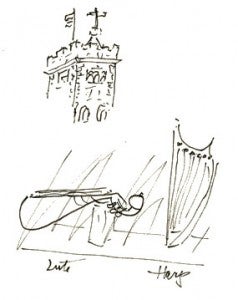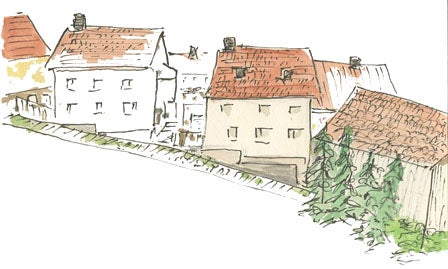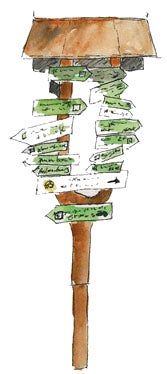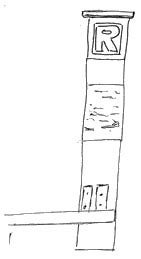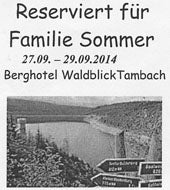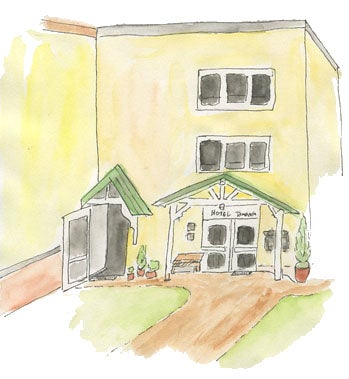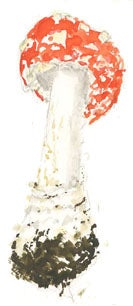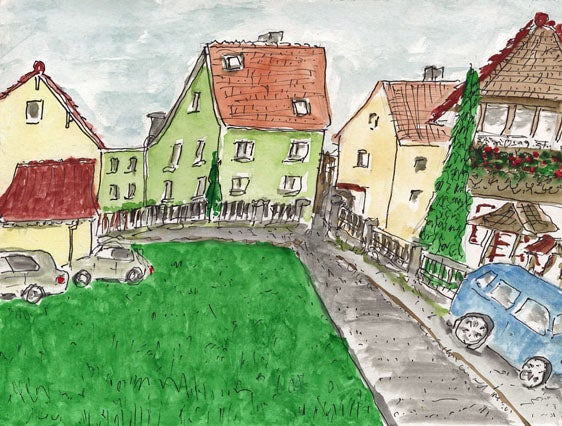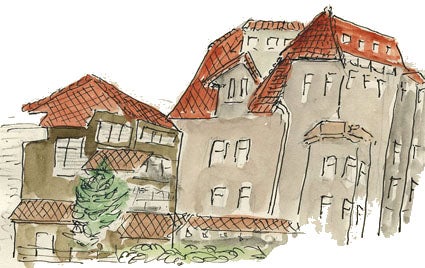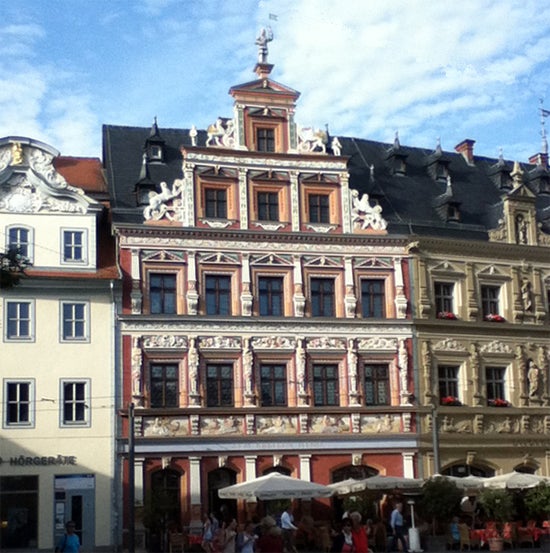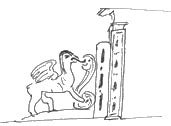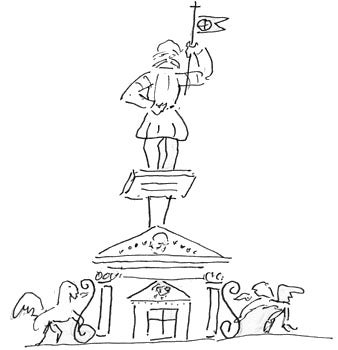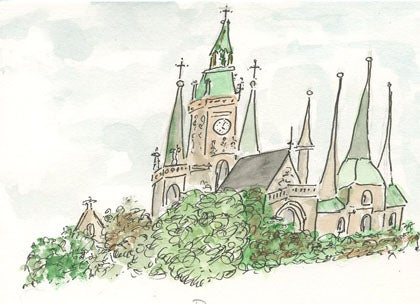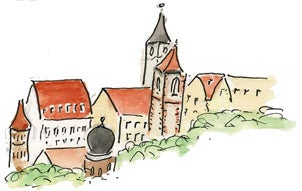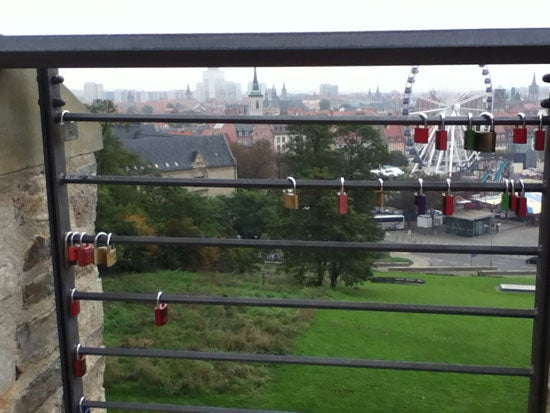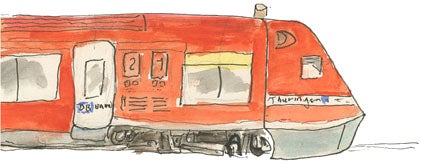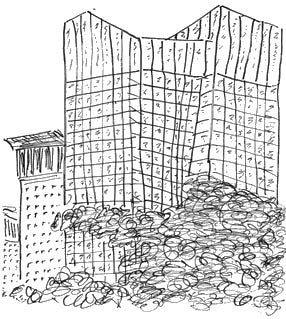Flying is no longer fun, at least not in steerage. We were unwilling to pay extra for shorter lines in the airport, extra legroom, early boarding, or any of the other “amenities” United Airlines offers its passengers for an additional fee. As a result, our flight to Frankfurt was a flying slum. The crew tried their best but there were simply too many passengers crammed into too little space. Climbing across people to get to the toilet required apologies going and returning. Two of the three movies on this long flight were superhero flicks (Spider Man and yes, Superman) that we did not watch.
Our Brazilian friends Hart and Isolda met us at the Frankfurt Airport where we had a late breakfast (including beer for Barb) before departing for the train station. Hart was born in Germany and spent his early years in East Germany. He served as our tour guide and interpreter. Bob’s knowledge of German from a Ph.D. reading requirement was limited to occasional menu items.
Frankfurt Airport, September
We took a local train to Eisenach were Hart had spent time with his grandparents. Like other small cities in Germany, Eisenach was clean, well laid out, prosperous, and pedestrian-friendly. There were no signs of the destruction wrought by WWII and the subsequent Soviet occupation.
Location of Thuringia in Germany (home of the Thuringer sausage)
Besides the frequent use of bicycles by ordinary folks of all ages, genders, and social classes, there was an impressive on-time public transportation system that seamlessly meshed busses, trams, and fast intercity trains. You could set your watch on scheduled arrival and departure times; at one point a station master apologized for an arriving train that was five minutes late. As loyal Amtrak riders in the US, we were duly ashamed.
At Eisenach we saw statues of J. S. Bach (he spent time there). We sketched the Rathaus and an ornamented post office building and had dinner (more sausage) in a grotto restaurant.
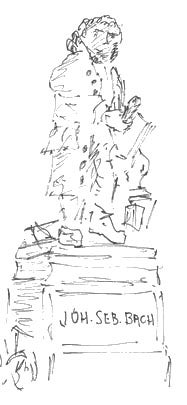 |
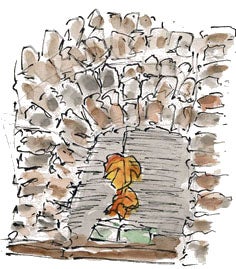 Fall leaf detail in the BrunerKeler grotto restaurant Fall leaf detail in the BrunerKeler grotto restaurant |
|---|
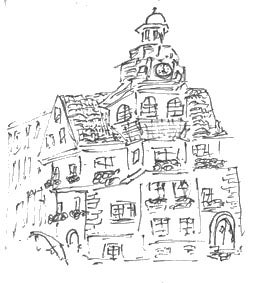
Eisenach Rathaus (city hall) |
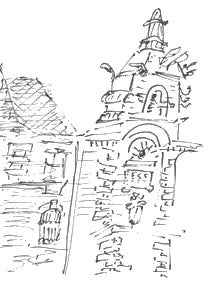
Eisenach post office |
Crossing intersections one had to look both ways for cyclists, very few wearing helmets but they did use bike lights at night (this is enforced in both Germany and Holland).
We visited Wartburg Castle, a world heritage site, originally built in in the 1067 overlooking Eisenach, and saw the room where Martin Luther translated the new testament into German. There was also a major collection of art from the middle ages.
Brotterode
Taking train and bus, we traveled to Brotterode to begin our trek, first spending the night at Zur Guten Quelle (The Good Well). This is the view from our hotel room window.
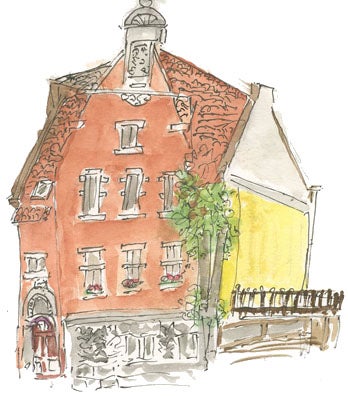
Brotterode tourist center and restaurant |
This was our starting point for hiking the ancient Rennsteig trail (“R” sign).
|
|---|
Tambach-Dietharz
Hart had made reservations for us to stay in guesthouses and small hotels along the way. Each place provided a sumptuous breakfast featuring sausages, rolls, and three-minute eggs in a special room.
|
Berg hotel in Tambach |
This turned out to our only opportunity to forage for mushrooms.
|
View downhill from the hotel
We walked to the nearby town of Lohmühle. The name refers to a mill which is used to crush the vegetable tanning materials necessary for the tanning process. The structure is now a restaurant and museum. It situated along a major bicycle route.
Change of plans
As the distances turned out to be much longer than anticipated, we shifted from nature mode to culture mode. Instead of continuing our walking tour, we traveled by bus and train to Erfurt, where Hart had lived as a child, with his mother and grandparents.
|
Some detail from this building |
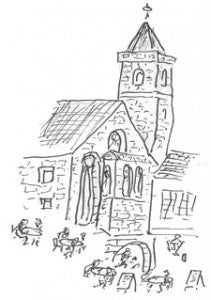
Restaurant and church at the end of the bridge way |
Erfurt Dom
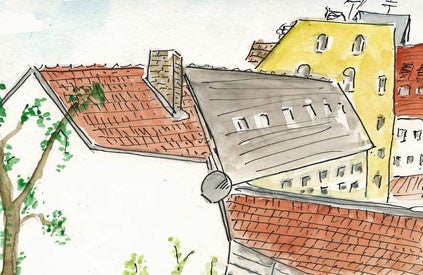
Roof lines |
View from the St. Petersburg Citadel |
Erfurt is the capital city of Thuringia at the crossroads of ancient European trade routes. We hiked up to the St. Petersburg citadel on a hill above the city. In town, the main square had been turned into an amusement park with an enormous Ferris wheel, scary rides and an active nighttime scene.
On our return home, our friend, Neal Kroll sent us a photos from the DDR era — check them out (will come up as a separate tab or window).

Street lamp |
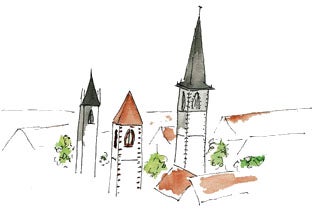
Another citadel view |
Newlyweds attached engraved locks at various sites around the city. These are at the St. Petersburg citadel. (Comment from Neal “Those bike locks on bridges started a few years ago and were “cute” — now it is such a fad that the resulting weight has become dangerous on some bridges.”)
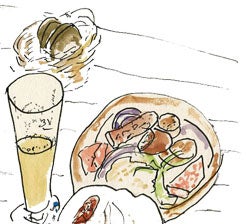
Butcher plate lunch |
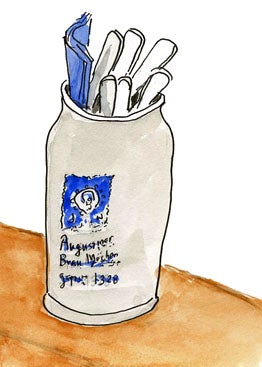
Table flatware |
We made a day trip by train to Weimar where we spent most of our time in at the Goethe House, home of Johann Wolfgang von Goethe whose achievements ranged across so many fields. He was born in 1749 and knew most of the prominent people in politics and the arts. His writings included epic and lyric poems, novels, verse dramas, literary criticism, and treatises on botany, architecture, anatomy, and color. More than 10,000 of his letters and nearly 3000 drawings are extant. He served on the Duke’s Privy Council, designed many public works and government buildings, oversaw the opening of nearby silver mines, and is perhaps best known today for his epic work Doctor Faustus.
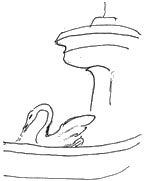 |
Fountain detail on main pedestrian walkway in Weimar |
|---|
Hart’s relatives once owned a clothing store in Weimar. He asked an older woman about it, and she remembered it very positively – interesting as this was from the Soviet era.
Our last stop in Germany was Frankfurt, a large modern city with many tall buildings.
Willy Brandt Plaza
It has the grandeur and the social problems that come with being a powerful financial center — not to mention, expensive pastries.
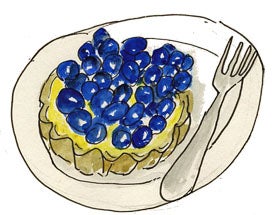 |
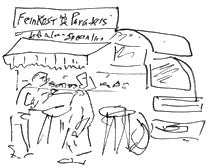
Frankfurt food truck |
|---|
